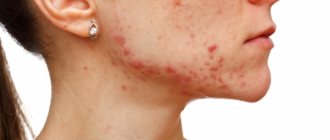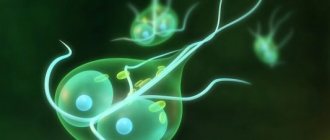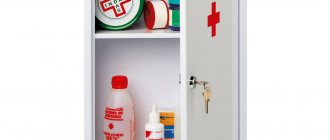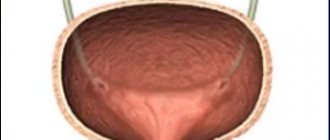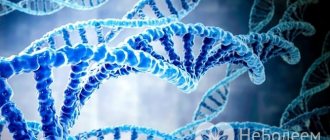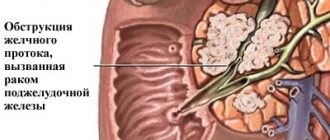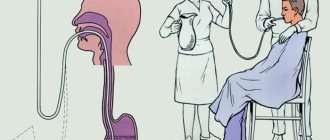The heart is the organ without which a person’s quality life is impossible. The heart is formed in the 5th week of a woman’s pregnancy and accompanies us from this time until death, that is, it works much longer than a person lives. Under these conditions, it is clear that special attention needs to be paid to the heart, and when the first signs of a disruption in its functioning appear, consult a doctor. We bring to your attention an overview list of heart diseases, and also tell you about the main symptoms that you should definitely pay attention to in order to remain healthy and functional throughout your life.
Coronary heart disease (CHD)
This is a pathology in which there is insufficient blood supply to the myocardium. The cause is atherosclerosis or thrombosis of the coronary arteries.
Classification of IHD
| Chronic forms | Acute forms |
| Stable angina (angina pectoris) | Unstable angina |
| Silent (asymptomatic) myocardial ischemia | Myocardial infarction |
| Cardiosclerosis | Acute coronary syndrome |
Acute coronary syndrome is worth talking about separately. Its symptom is a prolonged (more than 15 minutes) attack of chest pain. This term does not denote a separate disease, but is used when it is impossible to distinguish myocardial infarction from unstable angina by symptoms and ECG. The patient is given a preliminary diagnosis of “acute coronary syndrome” and immediately begins thrombolytic therapy, which is needed for any acute form of coronary artery disease. The final diagnosis is made after blood tests for markers of infarction: cardiac troponin T and cardiac troponin 1. If their levels are elevated, the patient has had myocardial necrosis.
Symptoms of IHD
A sign of angina pectoris is attacks of burning, squeezing pain behind the sternum. Sometimes the pain radiates to the left side, to various parts of the body: shoulder blade, shoulder, arm, neck, jaw. Less often, pain is localized in the epigastrium, so patients may think that they have problems with the stomach and not with the heart.
With stable angina, attacks are provoked by physical activity. Depending on the functional class of angina (hereinafter referred to as FC), pain can be caused by stress of varying intensity.
| 1 FC | The patient tolerates daily activities well, such as long walking, light jogging, climbing stairs, etc. Attacks of pain occur only during high-intensity physical activity: fast running, repeated weight lifting, playing sports, etc. |
| 2 FC | An attack may occur after walking more than 0.5 km (7–8 minutes without stopping) or climbing stairs higher than 2 floors. |
| 3 FC | A person’s physical activity is significantly limited: walking 100–500 m or climbing to the 2nd floor can trigger an attack. |
| 4 FC | Attacks are triggered by even the slightest physical activity: walking less than 100 m (for example, moving around the house). |
Unstable angina differs from stable angina in that attacks become more frequent, begin to appear at rest, and can last longer - 10-30 minutes.
Cardiosclerosis is manifested by chest pain, shortness of breath, fatigue, swelling, and rhythm disturbances.
Signs of myocardial infarction (hereinafter referred to as MI) can be different. Depending on the symptoms, several forms of MI are distinguished.
According to statistics, about 30% of patients die from this heart disease within 24 hours without seeing a doctor. Therefore, carefully study all the signs of MI in order to call an ambulance in time.
Symptoms of MI
| Form | Signs |
| Anginal – the most typical | Pressing, burning pain in the chest, sometimes radiating to the left shoulder, arm, shoulder blade, left side of the face. The pain lasts from 15 minutes (sometimes even a day). Not removable by Nitroglycerin. Analgesics only weaken it temporarily. Other symptoms: shortness of breath, arrhythmias. |
| Asthmatic | An attack of cardiac asthma develops, caused by acute failure of the left ventricle. Main signs: feeling of suffocation, lack of air, panic. Additional: cyanosis of the mucous membranes and skin, accelerated heartbeat. |
| Arrhythmic | High heart rate, low blood pressure, dizziness, possible fainting. |
| Abdominal | Pain in the upper abdomen that radiates to the shoulder blades, nausea, vomiting. Often even doctors initially confuse it with gastrointestinal diseases. |
| Cerebrovascular | Dizziness or fainting, vomiting, numbness in an arm or leg. The clinical picture of such an MI is similar to an ischemic stroke. |
| Asymptomatic | The intensity and duration of pain is the same as during a normal attack of angina. There may be slight shortness of breath. A distinctive sign of pain is that a Nitroglycerin tablet does not help. |
Treatment of coronary artery disease
| Stable angina | Relieving an attack - Nitroglycerin. Long-term therapy: Aspirin, beta-blockers, statins, ACE inhibitors. |
| Unstable angina | Emergency care: call an ambulance if an attack of greater intensity than usual occurs, and also give the patient an Aspirin tablet and a Nitroglycerin tablet every 5 minutes 3 times. In the hospital, the patient will be given calcium antagonists (Verapamil, Diltiazem) and Aspirin. The latter will need to be taken on an ongoing basis. |
| Myocardial infarction | Emergency help: call a doctor immediately, 2 tablets of Aspirin, Nitroglycerin under the tongue (up to 3 tablets with an interval of 5 minutes). Upon arrival, doctors will immediately begin this treatment: they will inhale oxygen, administer a morphine solution, if Nitroglycerin does not relieve the pain, and administer Heparin to thin the blood. Further treatment: pain relief with intravenous Nitroglycerin or narcotic analgesics; preventing further necrosis of myocardial tissue with the help of thrombolytics, nitrates and beta-blockers; constant use of Aspirin. Blood circulation in the heart is restored using the following surgical operations: coronary angioplasty, stenting, coronary artery bypass grafting. |
| Cardiosclerosis | The patient is prescribed nitrates, cardiac glycosides, ACE inhibitors or beta-blockers, Aspirin, diuretics. |
Raynaud's syndrome
Raynaud's syndrome is a disorder of the innervation of small vessels, mainly of the upper extremities, leading to capillary spasm, pale or blue discoloration of the fingertips. The disease is based on hereditary predisposition and provoking factors.
Prevalence : up to 3% of people, mostly female.
Symptoms : coldness and paleness of the fingers, sometimes their motor skills are impaired and trophic ulcers occur.
Treatment : medication - vasodilators, surgical - sympathectomy.
Prognosis : favorable; with a mild course, patients live for many years.
Chronic heart failure
This is a condition of the heart in which it is unable to fully pump blood throughout the body. The reason is heart and vascular diseases (congenital or acquired defects, ischemic heart disease, inflammation, atherosclerosis, hypertension, etc.).
In Russia, more than 5 million people suffer from CHF.
Stages of CHF and their symptoms:
- 1 – initial. This is mild left ventricular failure that does not lead to hemodynamic (circulatory) disturbances. There are no symptoms.
- Stage 2A. Poor circulation in one of the circles (usually the small circle), enlargement of the left ventricle. Signs: shortness of breath and palpitations with little physical exertion, cyanosis of the mucous membranes, dry cough, swelling of the legs.
- Stage 2B. Hemodynamics are impaired in both circles. The chambers of the heart undergo hypertrophy or dilatation. Signs: shortness of breath at rest, aching pain in the chest, blue tint of the mucous membranes and skin, arrhythmias, cough, cardiac asthma, swelling of the limbs, abdomen, enlarged liver.
- Stage 3. Severe circulatory disorders. Irreversible changes in the heart, lungs, blood vessels, kidneys. All the signs characteristic of stage 2B intensify, and symptoms of damage to internal organs appear. Treatment is no longer effective.
Treatment
First of all, treatment of the underlying disease is necessary.
Symptomatic drug treatment is also carried out. The patient is prescribed:
- ACE inhibitors, beta blockers or aldosterone antagonists - to lower blood pressure and prevent further progression of heart disease.
- Diuretics - to eliminate edema.
- Cardiac glycosides - for the treatment of arrhythmias and improvement of myocardial performance.
Development conditions
The list of reasons that may lead to the occurrence of cardiac pathologies is quite diverse:
- Infection with viruses, bacteria, leading to rheumatic lesions of the heart membranes.
- Smoking abuse.
- An increased level of blood cholesterol, which causes deposition of atherosclerotic compounds on the vascular walls.
- Excessive consumption of alcoholic beverages.
- Excessive addition of salt to dishes.
- Excess body weight.
- Presence of diabetes mellitus.
There are risk factors that are independent of patients, such as male gender, age over 50 years, negative heredity, which provokes the appearance of CVD disease in subsequent generations.
Valve defects
There are two typical types of valve pathologies: stenosis and insufficiency. With stenosis, the valve lumen is narrowed, making it difficult to pump blood. In case of insufficiency, the valve, on the contrary, does not close completely, which leads to the outflow of blood in the opposite direction.
More often, such heart valve defects are acquired. They appear against the background of chronic diseases (for example, ischemic heart disease), previous inflammation or poor lifestyle.
The aortic and mitral valves are most susceptible to disease.
Symptoms and treatment of the most common valve diseases:
| Name | Symptoms | Treatment |
| Aortic stenosis | At the initial stage there are no symptoms, so it is very important to regularly undergo preventive heart examinations. At a severe stage, attacks of angina pectoris, fainting during physical exertion, pale skin, and low systolic blood pressure appear. | Drug treatment of symptoms (heart failure due to valve defects). Valve replacement. |
| Aortic valve insufficiency | Increased heart rate, shortness of breath, cardiac asthma (attacks of suffocation), fainting, low diastolic blood pressure. | |
| Mitral stenosis | Shortness of breath, enlarged liver, swelling of the abdomen and limbs, sometimes hoarseness of the voice, rarely (in 10% of cases) pain in the heart. | |
| Mitral valve insufficiency | Shortness of breath, dry cough, cardiac asthma, swelling of the legs, pain in the right hypochondrium, aching pain in the heart. |
Mitral valve prolapse
Another common pathology is mitral valve prolapse. Occurs in 2.4% of the population. This is a congenital defect in which the valve leaflets “sink” into the left atrium. In 30% of cases it is asymptomatic. In the remaining 70% of patients, doctors note shortness of breath, pain in the heart area, accompanied by nausea and a feeling of a “lump” in the throat, arrhythmias, fatigue, dizziness, and frequent increases in temperature to 37.2–37.4.
Treatment may not be required if the disease is asymptomatic. If the defect is accompanied by arrhythmias or pain in the heart, symptomatic therapy is prescribed. If the valve changes significantly, surgical correction is possible. Since the disease progresses with age, patients need to be examined by a cardiologist 1-2 times a year.
Ebstein's anomaly
Ebstein's anomaly is a displacement of the tricuspid valve leaflets into the right ventricle. Symptoms: shortness of breath, paroxysmal tachycardia, fainting, swelling of the veins in the neck, enlargement of the right atrium and the upper part of the right ventricle.
Treatment for asymptomatic cases is not carried out. If the symptoms are severe, surgical correction or valve transplantation is performed.
Diagnostic methods
Diagnostic methods are constantly becoming more technically complex, making it possible to identify the disease at the initial stages.
At the appointment, the doctor reveals a deformation of the chest, the presence of a pulse in non-specific places, and a sternal bulge in the area of the heart. The patient has cyanosis of the ears, nasolabial triangle, pallor of the skin, swelling of the feet and legs, and often shortness of breath. During percussion, cardiac dimensions and fluid filling in the cavities of the pleura and pericardium are determined. Cardiac auscultation detects rhythmic disturbances of the heart, defective murmurs and tones.
Non-invasive methods:
- Echoctrocardiography
- ECG diagnostics
- Ultrasound
Invasive methods with catheterization of the heart cavities and arteries reveal the size of the heart cavities, disturbances in the connection of blood vessels to the heart, pathological communication of the heart cavities and blood vessels, and study of the composition of the blood.
- Angiography detects coronary vascular disease.
- Magnetic tomography method.
- Radionuclide survey
In children, heart diseases are most often congenital, manifested by cyanosis of the nasolabial triangle, crying in infants, rapid fatigue, fainting, and lagging behind peers. The diagnosis is made in the first year of life, most diseases are treatable.
Congenital heart defects
Congenital anomalies of the heart structure include:
- Atrial septal defect is the presence of communication between the right and left atria.
- A ventricular septal defect is an abnormal communication between the right and left ventricles.
- The Eisenmenger complex is a high-lying ventricular septal defect, the aorta is displaced to the right and connects simultaneously with both ventricles (aortic dextroposition).
- Patent ductus arteriosus - the communication between the aorta and the pulmonary artery, which is normally present at the embryonic stage of development, is not closed.
- Tetralogy of Fallot is a combination of four defects: ventricular septal defect, aortic dextroposition, pulmonary stenosis and right ventricular hypertrophy.
Congenital heart defects - signs and treatment:
| Name | Symptoms | Treatment |
| Atrial septal defect | With a small defect, signs begin to appear in middle age: after 40 years. This is shortness of breath, weakness, fatigue. Over time, chronic heart failure develops with all the characteristic symptoms. The larger the defect, the earlier the symptoms begin to appear. | Surgical closure of the defect. Doesn't always happen. Indications: ineffectiveness of drug treatment for CHF, retardation in physical development in children and adolescents, increased blood pressure in the pulmonary circle, arteriovenous discharge. Contraindications: venoarterial shunt, severe left ventricular failure. |
| Ventricular septal defect | If the defect is less than 1 cm in diameter (or less than half the diameter of the aortic orifice), only shortness of breath is characteristic during moderate-intensity physical activity. If the defect is larger than the specified size: shortness of breath with light exertion or at rest, heart pain, cough. | Surgical closure of the defect. |
| Eisenmenger complex | Clinical picture: bluish skin, shortness of breath, hemoptysis, signs of CHF. | Medication: beta-blockers, endothelin antagonists. Surgery to close the septal defect, correct the aortic origin, and replace the aortic valve is possible, but patients often die during the procedure. The average life expectancy of a patient is 30 years. |
| Tetralogy of Fallot | Blue tint of mucous membranes and skin, retarded growth and development (both physical and intellectual), seizures, low blood pressure, symptoms of heart failure. Average life expectancy is 12–15 years. 50% of patients die before the age of 3 years. | Surgical treatment is indicated for all patients without exception. In early childhood, surgery is performed to create an anastomosis between the subclavian and pulmonary arteries to improve blood circulation in the lungs. At 3–7 years of age, radical surgery can be performed: simultaneous correction of all 4 anomalies. |
| Patent ductus arteriosus | It lasts for a long time without clinical signs. Over time, shortness of breath and palpitations, pallor or a blue tint to the skin, and low diastolic blood pressure appear. | Surgical closure of the defect. Indicated for all patients, except for those who have right-to-left shunting. |
Dextrocardia
In a healthy person, the heart is located to the left in relation to the midline of the chest. Dextrocardia is characterized by the fact that the heart is mostly on the right side. The vessels leaving the heart also take on a mirror arrangement. Almost always, dextrocardia is accompanied by a reverse arrangement of all internal organs.
According to various sources, the incidence ranges from 12 cases per 1000 to 1 case per 12 thousand. The cause is unknown.
Manifestations of the disease: except for the mirror located organs, it does not manifest itself in any way and does not affect the blood supply to the internal organs. The risk of occurrence together with other developmental defects increases.
Inflammatory diseases
Classification:
- Endocarditis – affects the inner lining of the heart, the valves.
- Myocarditis – muscle membrane.
- Pericarditis - the pericardial sac.
They can be caused by microorganisms (bacteria, viruses, fungi), autoimmune processes (for example, rheumatism) or toxic substances.
Heart inflammation can also be complications of other diseases:
- tuberculosis (endocarditis, pericarditis);
- syphilis (endocarditis);
- flu, sore throat (myocarditis).
Pay attention to this and consult a doctor promptly if you suspect flu or sore throat.
Symptoms and treatment of inflammation
| Name | Symptoms | Treatment |
| Endocarditis | High temperature (38.5–39.5), increased sweating, rapidly developing valve defects (detected by echocardiography), heart murmurs, enlarged liver and spleen, increased fragility of blood vessels (hemorrhages under the nails and in the eyes can be seen), thickening of the tips fingers. | Antibacterial therapy for 4–6 weeks, valve transplantation. |
| Myocarditis | It can occur in several ways: attacks of pain in the heart; symptoms of heart failure; or sinus tachycardia with extrasystole and supraventricular arrhythmias. An accurate diagnosis can be made based on a blood test for cardiac-specific enzymes, troponins, and leukocytes. | Bed rest, diet (No. 10 with salt restriction), antibacterial and anti-inflammatory therapy, symptomatic treatment of heart failure or arrhythmias. |
| Pericarditis | Chest pain, shortness of breath, palpitations, weakness, cough without sputum, heaviness in the right hypochondrium. | Non-steroidal anti-inflammatory drugs, antibiotics, in severe cases - subtotal or total pericardiectomy (removal of part or all of the pericardial sac). |
Syphilis of the cardiovascular system
In rare cases, a syphilitic infection affects the cardiac apparatus in isolation. It can affect both the walls of the aorta and the valves. Syphilis often affects the conduction system of the heart and coronary arteries.
Prevalence : up to 5% of all patients with syphilitic infection.
Symptoms : common manifestations include cardiac arrhythmias, valvular insufficiency, angina attacks, and left ventricular failure.
Treatment : long-term antibiotic therapy (penicillins, tetracyclines).
Prognosis : with a slow course and timely treatment, favorable.
Rhythm disorders
Causes: neuroses, obesity, poor diet, cervical osteochondrosis, bad habits, intoxication with drugs, alcohol or drugs, coronary heart disease, cardiomyopathies, heart failure, premature ventricular excitation syndromes. The latter are heart diseases in which there are additional impulse pathways between the atria and ventricles. You will read about these anomalies in a separate table.
Characteristics of rhythm disturbances:
| Name | Description |
| Sinus tachycardia | Rapid heartbeat (90–180 per minute) while maintaining the normal rhythm and normal pattern of impulse propagation throughout the heart. |
| Atrial fibrillation (flicker) | Uncontrolled, irregular and frequent (200–700 per minute) atrial contractions. |
| Atrial flutter | Rhythmic contractions of the atria with a frequency of about 300 per minute. |
| Ventricular fibrillation | Chaotic, frequent (200–300 per minute) and incomplete ventricular contractions. Lack of complete contraction provokes acute circulatory failure and fainting. |
| Ventricular flutter | Rhythmic contractions of the ventricles with a frequency of 120–240 per minute. |
| Paroxysmal supraventricular (supraventricular) tachycardia | Attacks of rhythmic rapid heartbeat (100–250 per minute) |
| Extrasystole | Spontaneous contractions out of rhythm. |
| Conduction disorders (sinoatrial block, interatrial block, atrioventricular block, bundle branch block) | Slowing down the rhythm of the entire heart or individual chambers. |
Syndromes of premature excitation of the ventricles:
| WPW syndrome (Wolf–Parkinson–White syndrome) | CLC syndrome (Clerc-Levy-Christesco) |
| Signs: paroxysmal (paroxysmal) supraventricular or ventricular tachycardia (in 67% of patients). Accompanied by a feeling of increased heartbeat, dizziness, and sometimes fainting. | Symptoms: tendency to attacks of supraventricular tachycardia. During them, the patient feels a strong heartbeat and may feel dizzy. |
| Cause: the presence of a bundle of Kent, an abnormal pathway between the atrium and ventricle. | Cause: the presence of a James bundle between the atrium and the atrioventricular junction. |
| Both diseases are congenital and quite rare. | |
Treatment of rhythm disturbances
It consists of treating the underlying disease, adjusting diet and lifestyle. Antiarrhythmic drugs are also prescribed. Radical treatment for severe arrhythmias is the installation of a defibrillator-cardioverter, which will “set” the rhythm of the heart and prevent ventricular or atrial fibrillation. In case of conduction disturbances, electrical cardiac stimulation is possible.
Treatment of premature ventricular excitation syndromes can be symptomatic (elimination of attacks with medications) or radical (radiofrequency ablation of the abnormal conduction pathway).
Kearns–Sayre syndrome
It is a mitochondrial cardiomyopathy, which is based on mutations in DNA genes. The onset of the disease occurs before the age of 20 years. There are no biases based on race or gender, and there are no known risk factors.
Prevalence : 1 in 10,000 people.
Clinic : drooping eyelid, retinopathy and cardiac arrhythmias such as prolongation of the P-P interval, symptoms of heart block.
Treatment : not developed.
Prognosis : if the course is mild, favorable.
Cardiomyopathies
These are myocardial diseases that cause heart failure, not associated with inflammatory processes or pathologies of the coronary arteries.
The most common are hypertrophic and dilated cardiomyopathies. Hypertrophic is characterized by the growth of the walls of the left ventricle and the interventricular septum, dilated - by an increase in the cavity of the left and sometimes right ventricles. The first is diagnosed in 0.2% of the population. Occurs in athletes and can cause sudden cardiac death. But in this case, it is necessary to carry out a careful differential diagnosis between hypertrophic cardiomyopathy and non-pathological enlargement of the heart in athletes.
| Variety | Symptoms | Treatment |
| Hypertrophic | In the early stages there are no signs. Then shortness of breath, fainting, arrhythmias, and heart pain appear. | Prohibition on sports activities, antiarrhythmic drugs (Amiodarone), beta-blockers or ACE inhibitors. Installation of a defibrillator-cardioverter for frequent paroxysms of arrhythmia. It is possible to remove overgrown heart tissue. |
| Dilatational | Symptoms of CHF. | Symptomatic treatment of CHF. If the disease progresses, a heart transplant is required. |
Cerebral amyloid angiopathy
Amyloid is a protein that is not normally found in the body. In case of long-term diseases, it is produced and settles in the internal organs, causing even more problems. Including on the walls of brain vessels, which leads to their blockage. Blood flow is disrupted and a stroke develops. More often this pathology occurs in old age.
Prevalence : up to 1% of the population.
Clinic : non-specific (from transient ischemic attacks and headaches to stroke).
Treatment : not developed.
Prognosis : unfavorable.
Dyspnea
Shortness of breath is one of the main symptoms and characteristic signs of heart disease. Clinically, it is expressed in a feeling of lack of air, the body’s attempts to consume oxygen more intensively. Shortness of breath can have two origins - cardiac and pulmonary. In the first case, a deficiency of adequate gas exchange in the lung tissue is caused by cardiac pathology, namely a disruption of the normal heartbeat cycle with stagnation of blood in the left chambers and pulmonary veins.
“Cardiac” shortness of breath is inspiratory in nature, that is, it occurs during inspiration. It can be found in men and women with:
- Myocardial infarction.
- Cardiomyopathies, myocarditis, valvular heart defects, severe angina pectoris, leading to the development of chronic heart failure (CHF).
- Disruption of the correct heart rhythm.
Patients develop so-called “pulmonary edema”, which has two stages - interstitial and alveolar. In the first phase, the blood stagnant in the pulmonary vessels (its liquid part) begins to overcome the barrier in the form of the vascular wall and enters the intercellular space of the lungs. It is then that the patient may be bothered by a dry cough due to heart disease, and dry wheezing can be heard in the lungs. In the second phase, the fluid enters directly into the alveoli of the lungs, contributing to the worsening of the condition, increasing shortness of breath, and distant moist wheezing.
Osteochondrosis
Heart pain with osteochondrosis occurs against the background of pinched spinal nerves. It radiates to the shoulder, shoulder blades, neck, leg, depending on the location of the lesion.
Differentiation from cardiac pathology:
- Osteochondrosis is characterized by periods of exacerbation and remission. As a rule, this is the autumn-spring period. The pain is long-lasting, but without dynamics. True heart disease is characterized by an increase in the severity of clinical symptoms.
- The pain is eliminated after therapy with anti-inflammatory drugs and relief of smooth muscle spasm.
- In women, symptoms are more pronounced than in men.
Clinical signs of osteochondrosis:
- pain in the affected area,
- headache,
- noise in ears,
- dizziness,
- pain in the lower abdomen, radiating to the buttocks and leg,
- stiffness in the lumbar region.
During menopause, women may also experience memory impairment and visual impairment.
To prevent spinal disease, women need to wear comfortable shoes, heel height no more than 8 cm, and not lift weights that are incompatible with their own physical capabilities and constitutional features.
Disorders in the valve apparatus
Diseases of this part of the heart affect females more. It is noteworthy that pathologies in this area may not manifest themselves for a long time, so the patient turns to the doctor when the disease has already developed sufficiently and began to provoke the appearance of unpleasant sensations. Since ladies suffer from this disease more often than the stronger sex, their symptoms are more pronounced.
Symptoms:
- dizziness;
- pain in the sternum area that does not last long;
- weakness;
- swelling of the legs and arms;
- interruptions in heart function;
- weight gain;
- difficulty breathing.
Pain in women appears more often after physical activity; it is aching in nature, without causing severe discomfort. Often the occurrence of such unpleasant sensations is associated with excessive emotional stress, to which women are also more susceptible. In addition, representatives of the fair sex with this disease may faint, which is not observed in men.
Snore
It would seem, what does snoring have to do with heart disease? Every fifth man snores. But research by scientists has shown that snoring, being one of the components of obstructive sleep apnea syndrome (OSA), can contribute to the development of heart disease. OSA is characterized by pauses in breathing during sleep, alternating with loud snoring. Close relatives of the snorer may notice that his snoring stops for a while, there is complete silence for a moment, after which the loud sound of snoring resumes. Moments of silence are apnea - short-term stops in breathing. In severe forms of OSA, there can be up to 400 such stops per night. This leads to oxygen starvation of organs, which contributes to the development of hypertension, myocardial infarction, stroke, and sudden death.
A relatively young branch of medicine, somnology, deals with various breathing disorders during sleep. If among your relatives there are people with “habitual” snoring, then they need to be examined. Especially if the snorer has other risk factors:
- Age over 40 years;
- Diabetes;
- Excess body weight;
- Arterial hypertension;
- Smoking.
The patient will need to undergo examination - polysomnography. This can be done in any department that deals with sleep problems. Somnology centers, offices and sleep laboratories operate in many large cities. The study is a recording of indicators of respiratory function, heart function, brain function, muscle movements of the eyeballs, facial muscles and limbs, and allows you to monitor blood oxygen saturation. This study is carried out during night sleep.
Based on the results obtained by polysomnography, the severity of the disease is determined and the question of the method of treatment is decided: conservative or surgical.
Treatment
Treatment methods for heart disease:
- Conservative (integrated approach) - the patient is prescribed a special diet, prescribed medication, and lifestyle adjustments. Therapeutic courses are also used in sanatoriums.
- Surgical – if the conservative method is ineffective or unacceptable. During the operation, the heart valves and blood vessels are replaced, and various types of organ damage are eliminated.
To avoid long-term treatment for heart disease or complex, expensive surgery, prevention is necessary. This should not become a periodic set of events, but an integral part of life.
How does the heart develop (form)?
To form all body systems, the fetus requires its own blood circulation. Therefore, the heart is the first functional organ to appear in the body of a human embryo; this occurs approximately in the third week of fetal development.
At the very beginning, an embryo is just a collection of cells. But as pregnancy progresses, there are more and more of them, and so they connect, forming into programmed forms. First, two tubes are formed, which then merge into one. This tube folds and rushes down to form a loop - the primary cardiac loop. This loop outstrips all other cells in growth and quickly lengthens, then lies to the right (maybe to the left, which means the heart will be positioned mirror-like) in the form of a ring.
So, usually on the 22nd day after conception, the first contraction of the heart occurs, and by the 26th day the fetus has its own blood circulation. Further development involves the appearance of septa, the formation of valves and remodeling of the heart chambers. The septums are formed by the fifth week, and the heart valves will be formed by the ninth week.
Interestingly, the fetal heart begins to beat at the normal rate of an adult - 75-80 beats per minute. Then, by the beginning of the seventh week, the pulse is about 165-185 beats per minute, which is the maximum value, and then a slowdown follows. The newborn's pulse is within the range of 120-170 beats per minute.
Functions of the heart - why do we need a heart?
Our blood provides the entire body with oxygen and nutrients. In addition, it also has a cleansing function, helping in the removal of metabolic waste.
The function of the heart is to pump blood through blood vessels.
How much blood does the human heart pump?
The human heart pumps from 7,000 to 10,000 liters of blood in one day. This amounts to approximately 3 million liters per year. That works out to 200 million liters over a lifetime!
The amount of blood pumped per minute depends on the current physical and emotional load - the greater the load, the more blood the body requires. So the heart can conduct from 5 to 30 liters through itself in one minute.
The circulatory system consists of about 65 thousand vessels, their total length is about 100 thousand kilometers! Yes, we didn't make a mistake.
conclusions
The most common cause of death among men and women around the world is cardiac disease. The risk of developing heart disease especially increases in women after 50 years of age. Sometimes simple fatigue, lower back pain or indigestion are the first symptoms of heart disease in women. Therefore, it is so important to know what signs of cardiac pathology are manifested. Timely diagnosis and proper treatment not only affect life expectancy, but also its quality. To be confident in the health of your heart, you need to visit a cardiologist at least once every 2 years, and after 40 years, preventive examinations should become an annual ritual.
Prevention of heart disease in children
Prevention of heart pathologies in children should begin from birth. Fatty deposits on arterial walls are found in 16% of infants; over the age of three years, almost 100% of children have these precursors of atherosclerosis. Usually, they go away on their own over time, but when favorable conditions are created, they can transform into plaques.
Often in children, atherosclerosis occurs without characteristic symptoms, appearing only with the onset of maturity, when the disease requires serious treatment. A young body has the ability to quickly cleanse and restore, which is why it is so important to instill healthy lifestyle skills. Prevention of a healthy child’s heart is based on the following rules:
- healthy eating;
- physical activity;
- giving up destructive habits;
- regular medical examinations.
The personal example of parents will be effective in this regard. They also need to know about the state of the cardiovascular system in themselves and their closest relatives, so that in case of a hereditary predisposition, they can carefully monitor the child’s well-being. His increased blood pressure and excess weight are reasons for urgent medical consultation.
Main cardiovascular pathologies and their causes
Cardiovascular diseases are a group of pathologies that includes diseases with a functional disorder of the myocardium, blood vessels, arteries and veins.
Their semiotics and clinical features are diverse. Classification of pathologies:
heart diseases;
- changes in veins and arteries;
- hypertonic disease.
List of cardiovascular diseases:
- arterial hypertension;
- IHD;
- thrombosis;
- thromboembolism;
- atherosclerosis;
- myocardial inflammation;
- defects of various origins;
- heart attack;
- stroke;
- arrhythmias;
- cardiosclerosis;
- VSD;
- cardiomyopathy;
- collapse;
- hypotension;
- pulmonary heart;
- myocardial dystrophy;
- NK;
- cardiopsychoneurosis;
- cardiac asthma;
- angina pectoris.
Characteristics of the main reasons for their development:
- atherosclerotic lesion;
- infections;
- genetic predestination;
- injuries with bleeding.
Physiology - the principle of operation of the human heart
Let's take a closer look at the principles and patterns of heart function.
Cardiac cycle
When an adult is calm, his heart beats in the range of approximately 70-80 cycles per minute. One pulse beat equals one cardiac cycle. At this speed of contraction, one cycle is completed in approximately 0.8 seconds. Of which, the contraction time of the atria is 0.1 seconds, the ventricles are 0.3 seconds, and the relaxation period is 0.4 seconds.
The frequency of the cycle is set by the cardiac pacemaker (the area of the heart muscle in which impulses arise that regulate the heart rate).
The following concepts are distinguished:
- Systole (contraction) - this concept almost always means contraction of the ventricles of the heart, which leads to a push of blood through the arterial bed and maximization of pressure in the arteries.
- Diastole (pause) is a period when the heart muscle is in the stage of relaxation. At this moment, the chambers of the heart fill with blood and the pressure in the arteries decreases.
So, when measuring blood pressure, two indicators are always recorded. Let's take the numbers 110/70 as an example, what do they mean?
- 110 is the top number (systolic pressure), that is, the pressure of the blood in the arteries at the moment of heart contraction.
- 70 is the lower number (diastolic pressure), that is, this is the pressure of the blood in the arteries at the moment the heart relaxes.
A simple description of the cardiac cycle:
- Cardiac cycle (animation)
At the moment of relaxation of the heart, the atria, and even the ventricles (through open valves), fill with blood.
- Atrial systole (contraction) occurs, allowing blood to completely move from the atria to the ventricles. Contraction of the atria begins at the point where the veins flow into it, which guarantees initial compression of their mouths and the inability of blood to flow back into the veins.
- The atria relax, and the valves separating the atria from the ventricles (tricuspid and mitral) close. Ventricular systole occurs.
- Ventricular systole pushes blood into the aorta through the left ventricle and into the pulmonary artery through the right ventricle.
- This is followed by a pause (diastole). The cycle repeats.
Conventionally, for one pulse beat there are two heart contractions (two systoles) - first the atria contract, and then the ventricles. In addition to ventricular systole, there is atrial systole. Contraction of the atria is of no value when the heart is working steadily, since in this case the time of relaxation (diastole) is enough to fill the ventricles with blood. However, once the heart starts beating faster, atrial systole becomes crucial - without it, the ventricles simply would not have time to fill with blood.
The push of blood through the arteries occurs only when the ventricles contract; it is these push-contractions that are called the pulse.
Heart muscle
The uniqueness of the heart muscle lies in its ability to perform rhythmic automatic contractions, alternating with relaxations, which occur continuously throughout life. The myocardium (the middle muscular layer of the heart) of the atria and ventricles is divided, which allows them to contract separately from each other.
Cardiomyocytes are muscle cells of the heart with a special structure that allows them to transmit a wave of excitation in a particularly coordinated manner. So there are two types of cardiomyocytes:
- ordinary workers (99% of the total number of cardiac muscle cells) - designed to receive a signal from the pacemaker through conducting cardiomyocytes.
- special conducting (1% of the total number of cardiac muscle cells) cardiomyocytes - form the conducting system. In their function they resemble neurons.
Like skeletal muscles, the heart muscle can increase in volume and increase its efficiency. The heart capacity of endurance athletes can be 40% larger than that of the average person! We are talking about beneficial hypertrophy of the heart, when it stretches and is able to pump more blood in one beat. There is another hypertrophy called “athletic heart” or “bull heart”.
The bottom line is that in some athletes the mass of the muscle itself increases, and not its ability to stretch and push large volumes of blood. The reason for this is irresponsibly designed training programs. Absolutely any physical exercise, especially strength training, should be based on cardio training. Otherwise, excessive physical stress on an unprepared heart causes myocardial dystrophy, which will lead to early death.
Conduction system of the heart
The conduction system of the heart is a group of special formations consisting of non-standard muscle fibers (conducting cardiomyocytes) and serving as a mechanism for ensuring the coordinated functioning of the parts of the heart.
Pulse path
This system ensures automatism of the heart - excitation of impulses generated in cardiomyocytes without an external stimulus. In a healthy heart, the main source of impulses is the sinoatrial (sinus) node. He is the leader and blocks the impulses from all other pacemakers. But if any disease occurs that leads to sick sinus syndrome, then other parts of the heart take over its function. Thus, the atrioventricular node (automatic center of the second order) and the His bundle (AC of the third order) are able to activate when the sinus node is weak. There are cases when secondary nodes enhance their own automaticity even during normal operation of the sinus node.
The sinus node is located in the upper posterior wall of the right atrium in close proximity to the mouth of the superior vena cava. This node initiates pulses with a frequency of approximately 80-100 times per minute.
The atrioventricular node (AV) is located in the lower part of the right atrium in the atrioventricular septum. This septum prevents the impulse from propagating directly into the ventricles, bypassing the AV node. If the sinus node is weakened, then the atrioventricular node will take over its function and begin to transmit impulses to the heart muscle at a frequency of 40-60 contractions per minute.
Next, the atrioventricular node passes into the His bundle (the atrioventricular bundle is divided into two legs). The right leg rushes towards the right ventricle. The left leg is divided into two more halves.
The situation with the left bundle branch has not been fully studied. It is believed that the left leg with fibers from the anterior branch rushes to the anterior and lateral wall of the left ventricle, and the posterior branch supplies fibers to the posterior wall of the left ventricle and the lower parts of the lateral wall.
In case of weakness of the sinus node and atrioventricular block, the His bundle is capable of creating impulses at a speed of 30-40 per minute.
The conduction system deepens and further branches into smaller branches, eventually passing into Purkinje fibers, which penetrate the entire myocardium and serve as a transmission mechanism for contraction of the ventricular muscles. Purkinje fibers are capable of initiating impulses at a frequency of 15-20 per minute.
Exceptionally trained athletes can have a normal resting heart rate down to the lowest recorded figure of just 28 beats per minute! However, for the average person, even one leading a very active lifestyle, a heart rate below 50 beats per minute may be a sign of bradycardia. If your heart rate is this low, you should be examined by a cardiologist.
Heartbeat
A newborn's heart rate may be around 120 beats per minute. As a person gets older, the pulse stabilizes between 60 and 100 beats per minute. Well-trained athletes (we are talking about people with well-trained cardiovascular and respiratory systems) have a heart rate of 40 to 100 beats per minute.
The rhythm of the heart is controlled by the nervous system - the sympathetic strengthens contractions, and the parasympathetic weakens.
Cardiac activity, to a certain extent, depends on the content of calcium and potassium ions in the blood. Other biologically active substances also contribute to the regulation of heart rhythm. Our heart may begin to beat faster under the influence of endorphins and hormones released when listening to our favorite music or kissing.
In addition, the endocrine system can have a significant impact on the heart rhythm - both the frequency of contractions and their strength. For example, the release of the well-known adrenaline by the adrenal glands causes an increase in heart rate. The hormone with the opposite effect is acetylcholine.
Heart sounds
One of the simplest methods for diagnosing heart disease is to listen to the chest using a stethoscope (auscultation).
In a healthy heart, during standard auscultation, only two heart sounds are heard - they are called S1 and S2:
- S1 is the sound heard when the atrioventricular (mitral and tricuspid) valves close during ventricular systole (contraction).
- S2 - the sound heard when the semilunar (aortic and pulmonary) valves close during diastole (relaxation) of the ventricles.
Each sound consists of two components, but to the human ear they merge into one due to the very short period of time between them. If, under normal conditions of auscultation, additional tones become audible, this may indicate some kind of disease of the cardiovascular system.
Sometimes additional abnormal sounds may be heard in the heart, called a heart murmur. As a rule, the presence of murmurs indicates some kind of heart pathology. For example, noise can cause blood to flow back in the opposite direction (regurgitation) due to malfunction or damage to a valve. However, noise is not always a symptom of a disease. To clarify the reasons for the appearance of additional sounds in the heart, it is worth doing echocardiography (ultrasound of the heart).
Edema syndrome and hepatomegaly
The formation of edema and an increase in the size of the liver in combination with shortness of breath are signs of CHF. They characterize the presence of stagnation of blood in the systemic circulation due to the inability of the heart to fully contract, “pumping” the entire volume of blood. Swelling appears closer to the evening hours, is localized symmetrically on both lower extremities, and has a dense consistency.
Severe heart failure leads to swelling in the body cavities:
- ascites (fluid in the abdominal cavity),
- hydrothorax (fluid in the pleural cavity),
- hydropericardium (fluid in the pericardial cavity).
Edema of renal origin, on the contrary, is more pronounced in the morning, soft, warm, predominates in the face and during the day, under the influence of gravity, descends through the subcutaneous fatty tissue to the lower parts of the body.
As a rule, parallel to the edema, an increase in the size of the liver appears, which may be asymptomatic for the patient or may begin with severity or dull pain in the right hypochondrium. In case of hepatomegaly, it is necessary to exclude liver pathology (cirrhosis, hepatitis, tumor lesions, parasitosis) through a biochemical blood test (ALT, AST, bilirubin, alkaline phosphatase, total cholesterol), analysis for specific pathogens, and ultrasound of the abdominal organs.
The symptoms of CHF worsen after physical activity, which significantly worsens the quality of life of patients and limits their daily mobility. More often, heart failure is diagnosed after 40 years of age, especially in older people, however, young people are also susceptible to this pathology. The following can lead to CHF:
- Arrhythmias.
- Post-infarction cardiosclerosis.
- Angina pectoris.
- Myocarditis.
- Cardiomyopathies.
- Heart valve defects.
- Long-term severe anemia.




